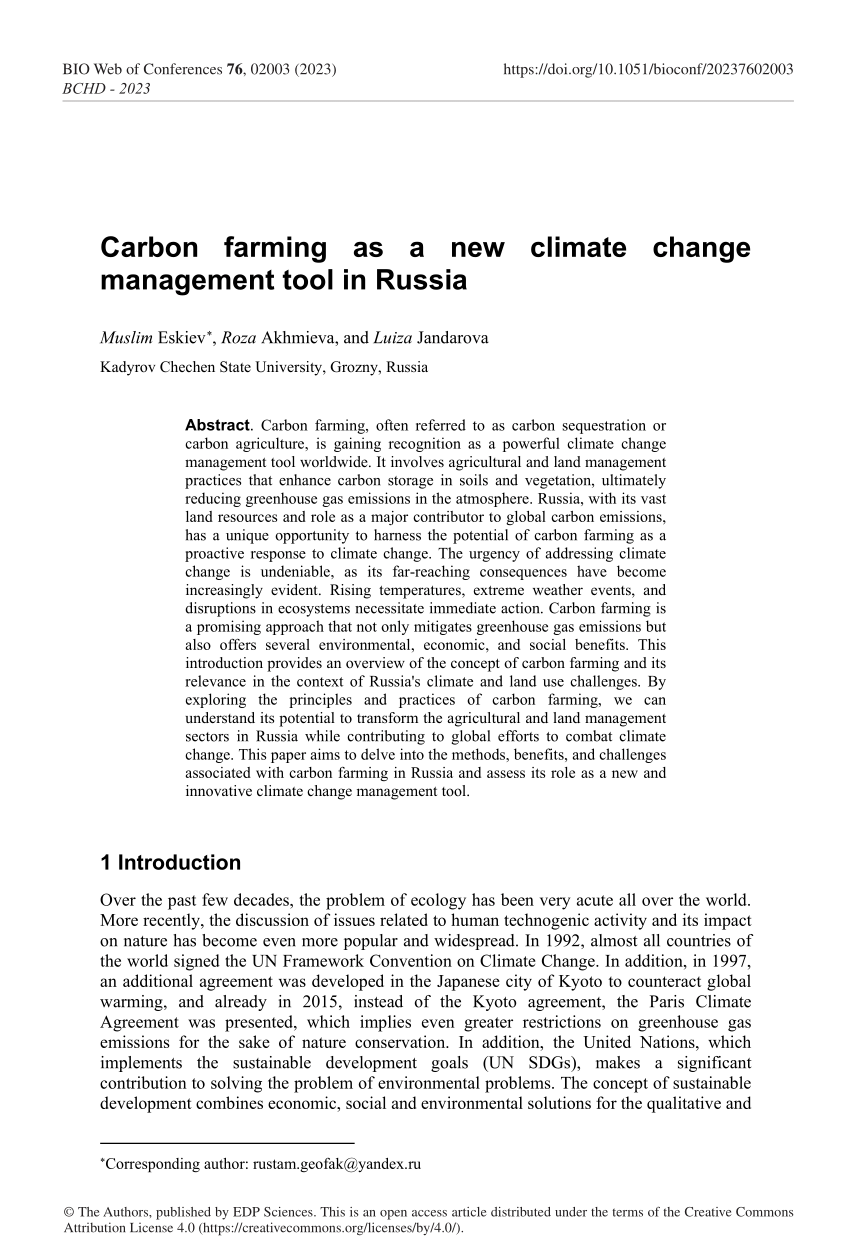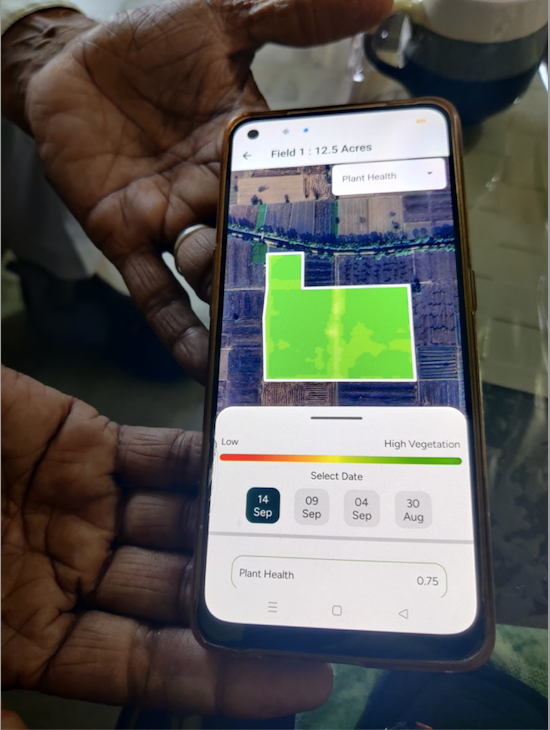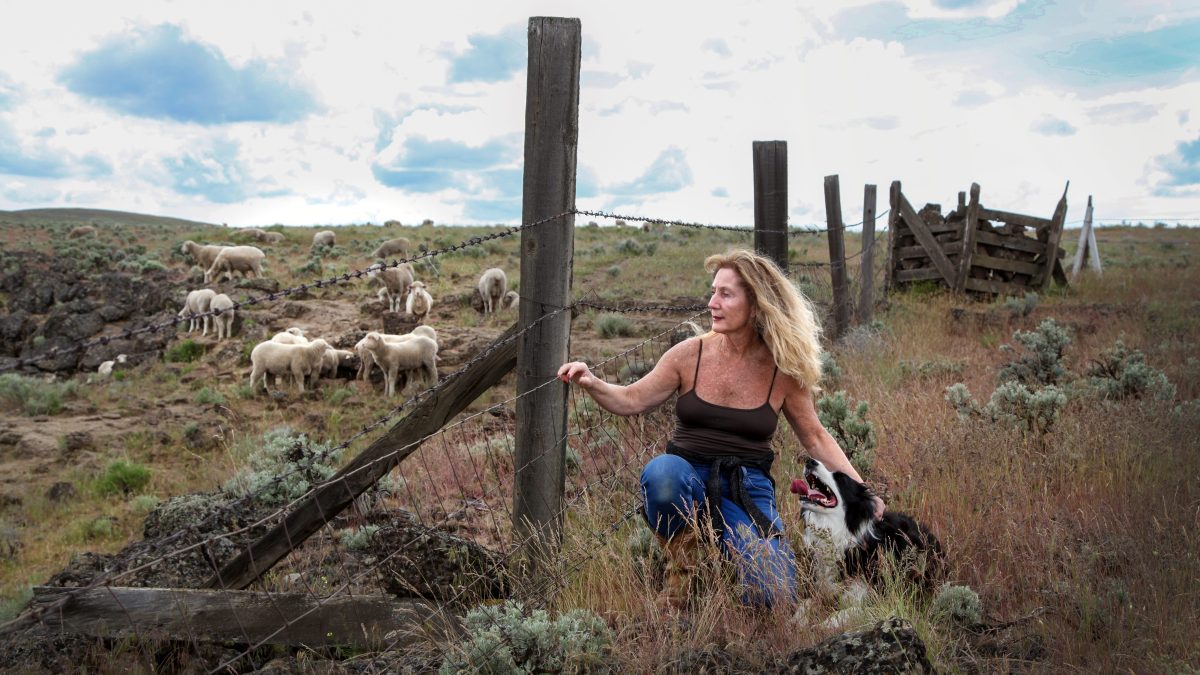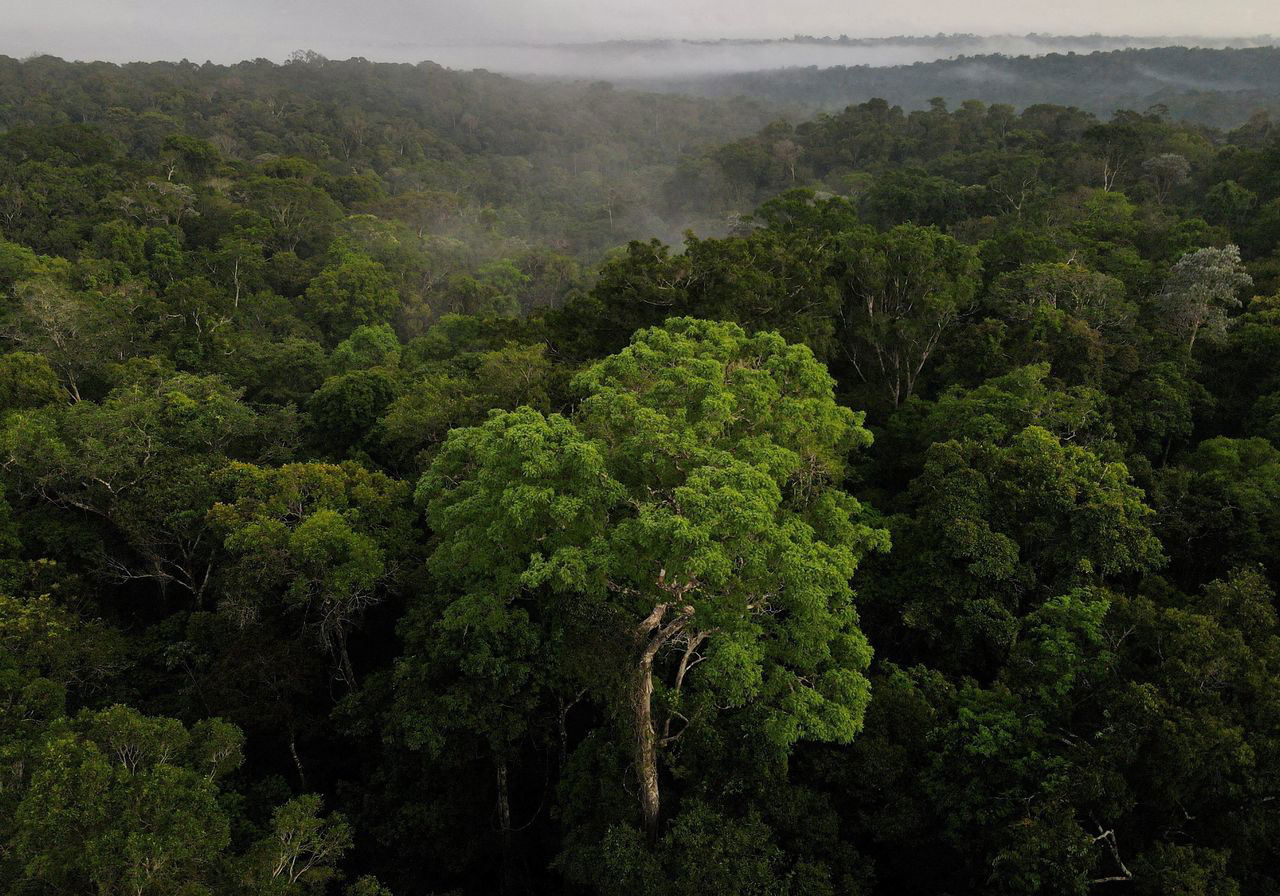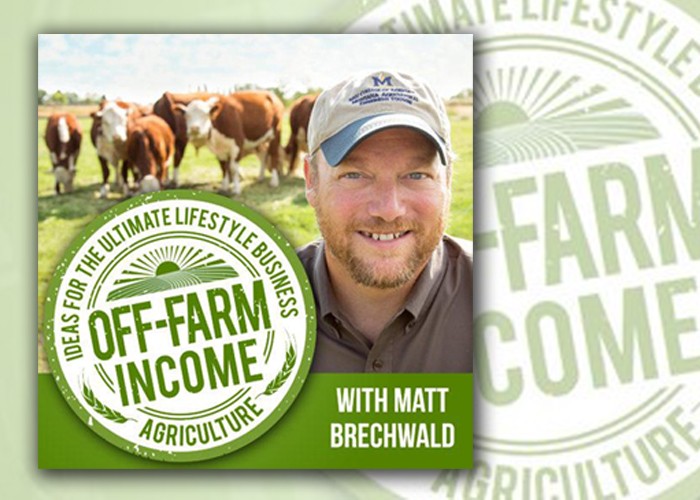12/15/2023 SOURCE: www.researchgate.net
PDF | Carbon farming, often referred to as carbon sequestration or carbon agriculture, is gaining recognition as a powerful climate change management... | Find, read and cite all the research you need on ResearchGate
(PDF) Carbon farming as a new climate change management tool in Russia
-
(0)
-
Bookmark
- Comments. (0)
12/15/2023 SOURCE: www.farmonline.com.au
The Australian Carbon Exchange will aim to make carbon credit trades easier and price setting more transparent.
Carbon credit exchange to bring rigour, simplicity to complex market
-
(0)
-
Bookmark
- Comments. (0)
12/15/2023 SOURCE: www.eco-business.com
Some Indian farmers are switching to sustainable ways of growing food, generating carbon credits in the process by slashing climate-heating emissions.
Indian farmers rack up carbon credits with climate-conscious ways
-
(0)
-
Bookmark
- Comments. (0)
12/14/2023 SOURCE: www.energymonitor.ai
-
(0)
-
Bookmark
- Comments. (0)
12/14/2023 SOURCE: www.nature.com
npj Climate Action - Farmer perspectives on carbon markets incentivizing agricultural soil carbon sequestration
Farmer perspectives on carbon markets incentivizing agricultural soil carbon sequestration
-
(0)
-
Bookmark
- Comments. (0)
12/08/2023 SOURCE: www.marketplace.org
Farmers are altering their practices with the goal of storing more carbon in the ground. But quantifying its effectiveness is tricky.
Ranchers, farmers look to ‘carbon farming’ as a way to diversify, and help the climate
-
(0)
-
Bookmark
- Comments. (0)
12/08/2023 SOURCE: www.msn.com
It's right under our feet. We barely notice as we go about our lives, yet it is nothing less than the largest carbon repository among all of Earth's ecosystems. This distinction is awarded neither to forests, nor to the atmosphere, but to our soils. There are around 2,400 billion tons of carbon in the first two meters below ground, which is three times as much as in the atmosphere.
How agriculture can make the most of one of the world's biggest carbon stocks, soil
-
(0)
-
Bookmark
- Comments. (0)
12/07/2023 SOURCE: www.chinaview.cn
Wind power project to reduce carbon dioxide emissions in NE China's Heilongjiang-
Wind power project to reduce carbon dioxide emissions in NE China's Heilongjiang
-
(0)
-
Bookmark
- Comments. (0)
12/07/2023 SOURCE: theconversation.com
Soil contains three times more carbon than the atmosphere. As climate change has become a global threat, agriculture’s ability to store more or less carbon is under close scrutiny.
How agriculture can make the most of one of the world’s biggest carbon sink, soil
-
(0)
-
Bookmark
- Comments. (0)
12/04/2023 SOURCE: www.msn.com
As more companies offset emissions, many are funding projects to reverse rainforest destruction.
Exploding Carbon-Credit Market Helps Brazil Regrow Rainforest
-
(0)
-
Bookmark
- Comments. (0)


